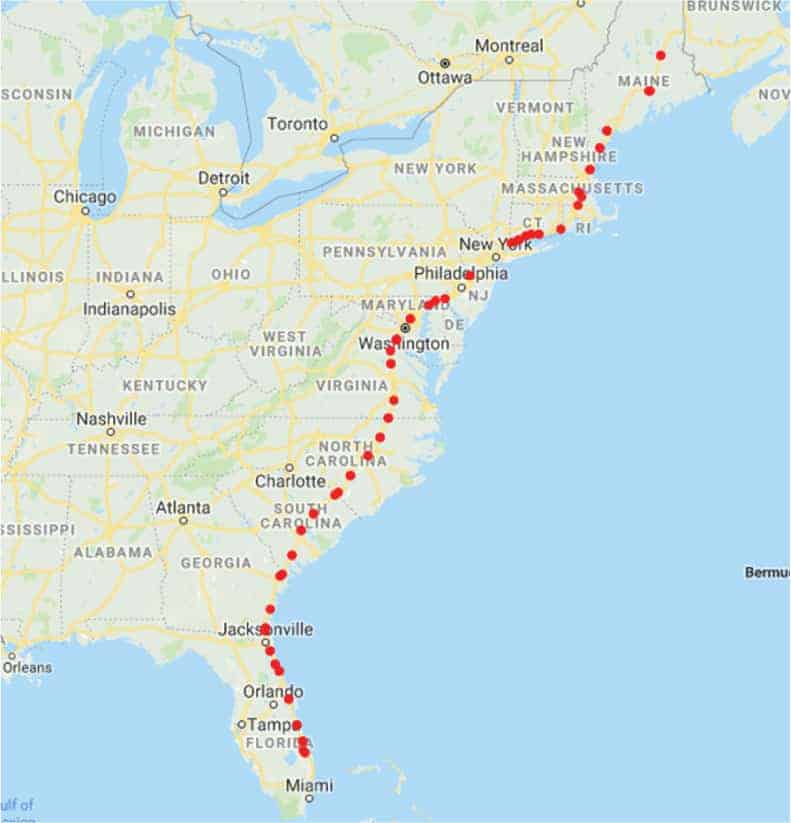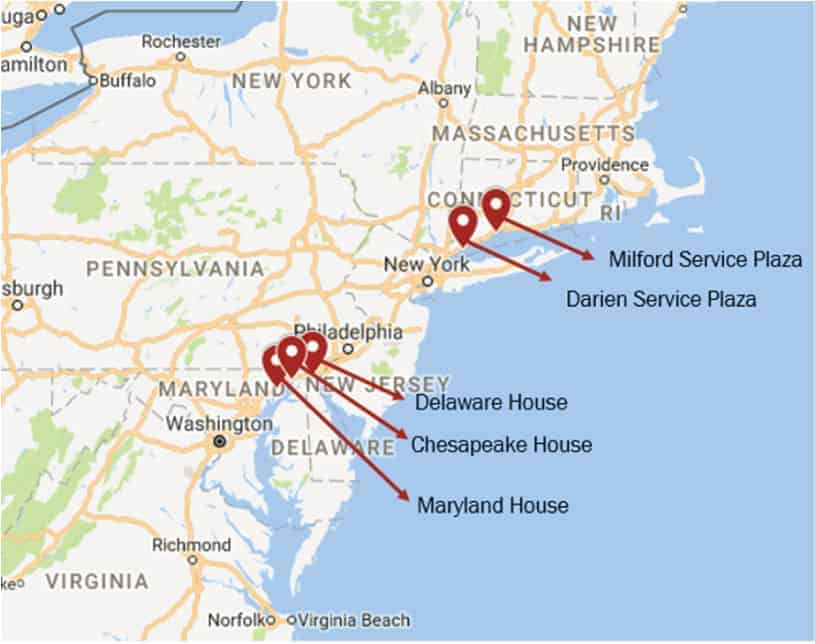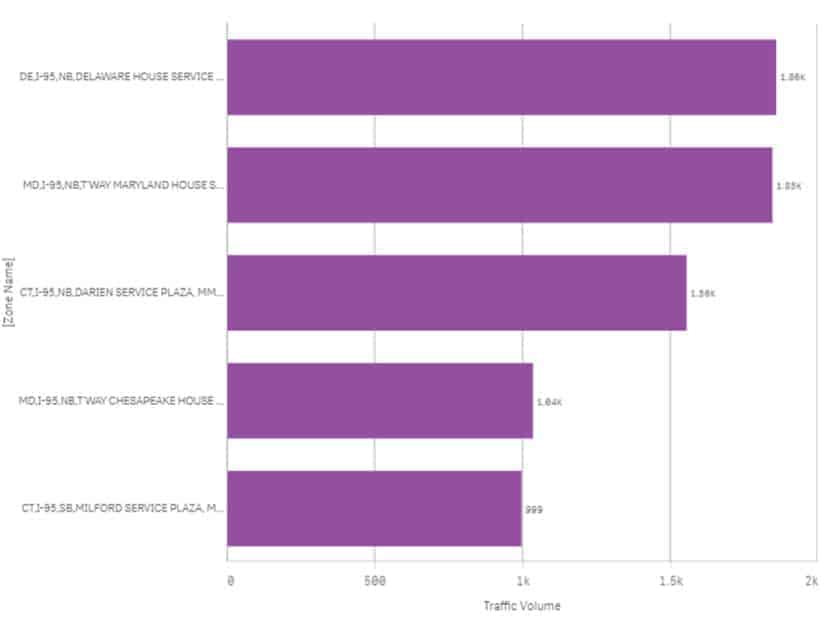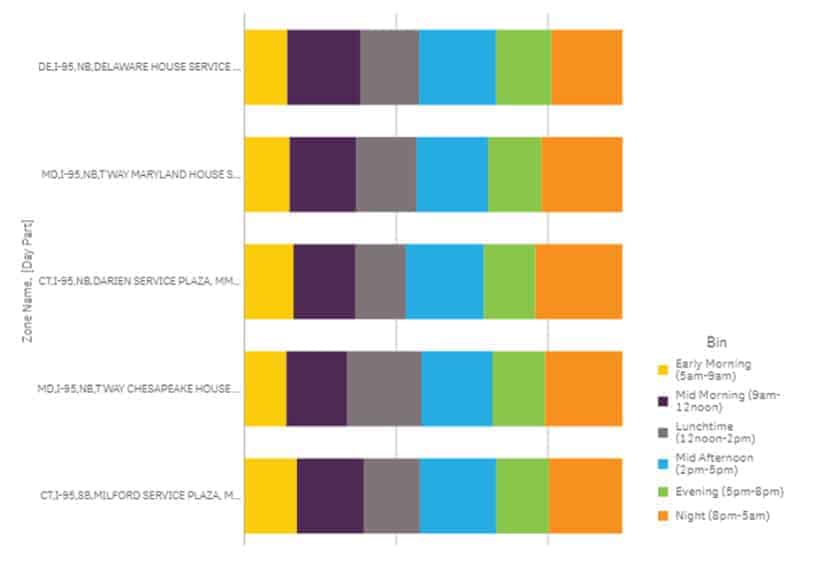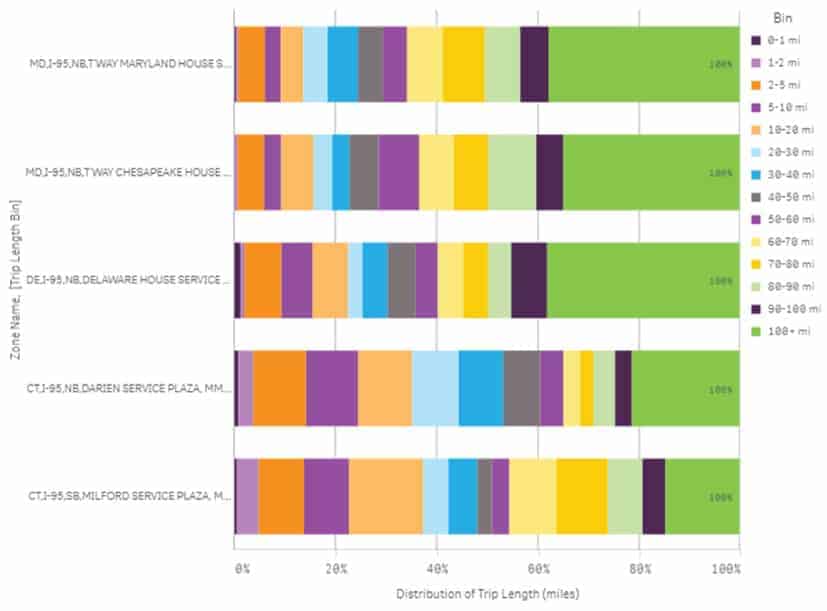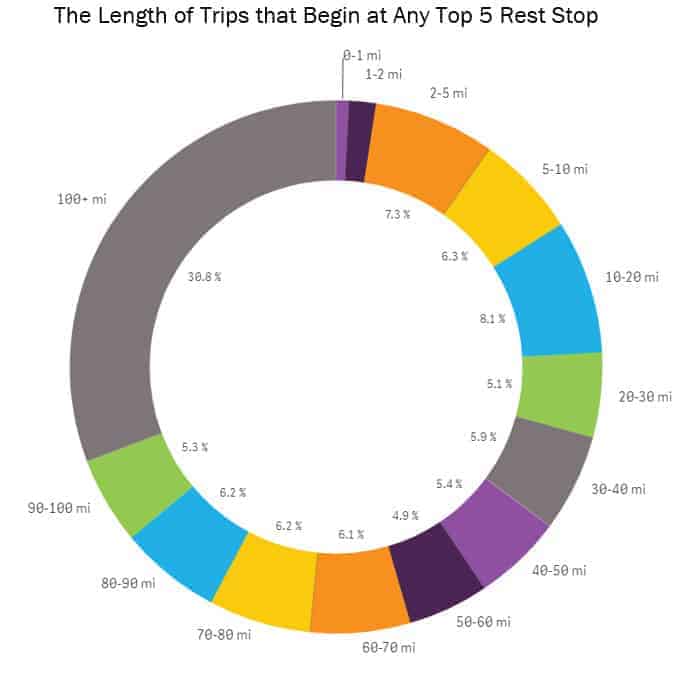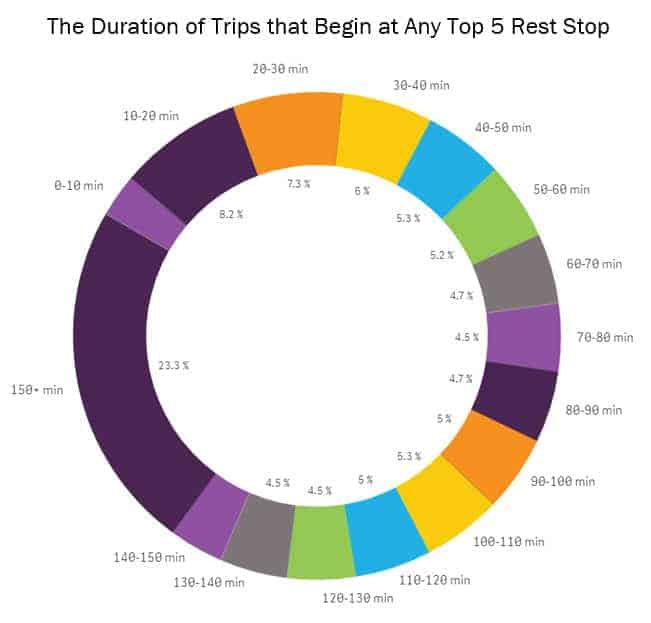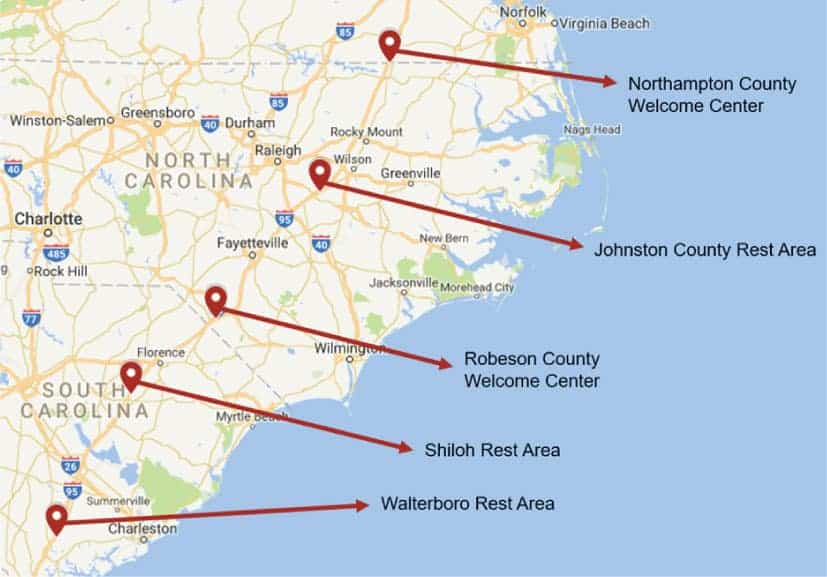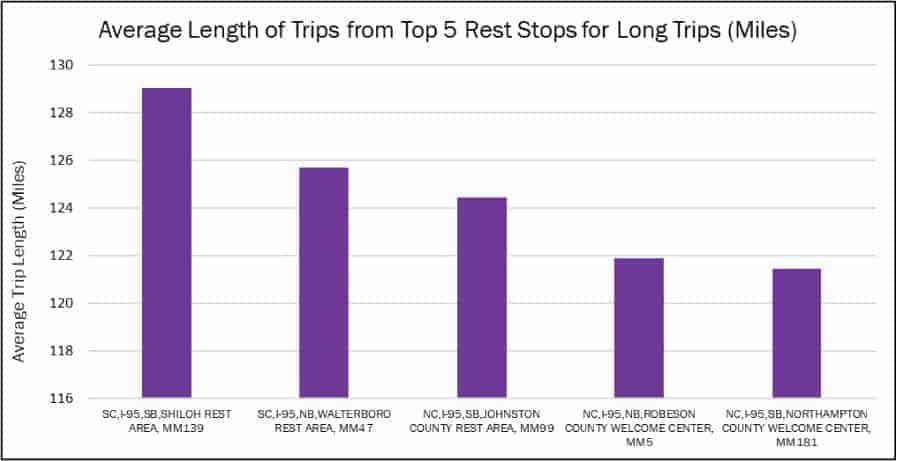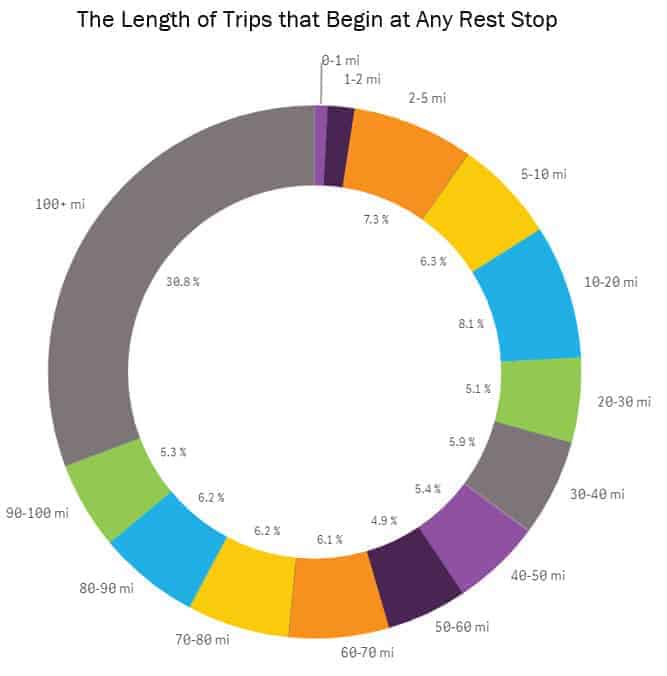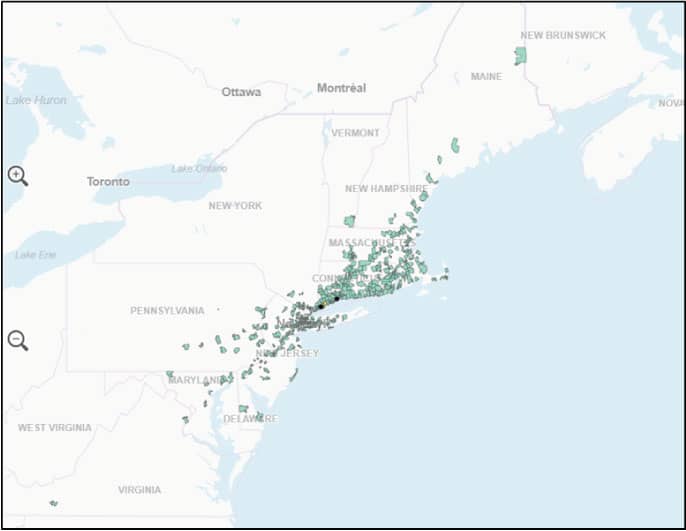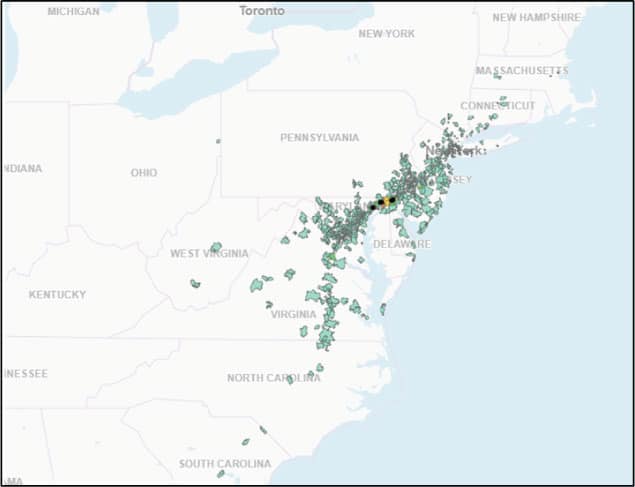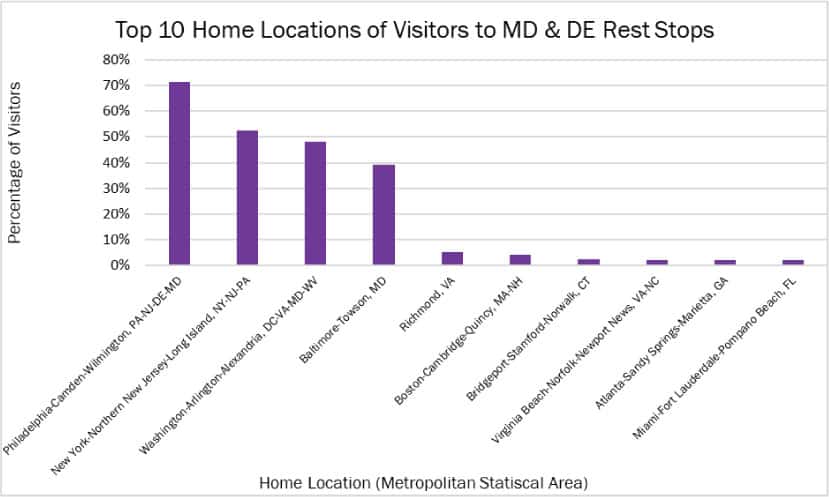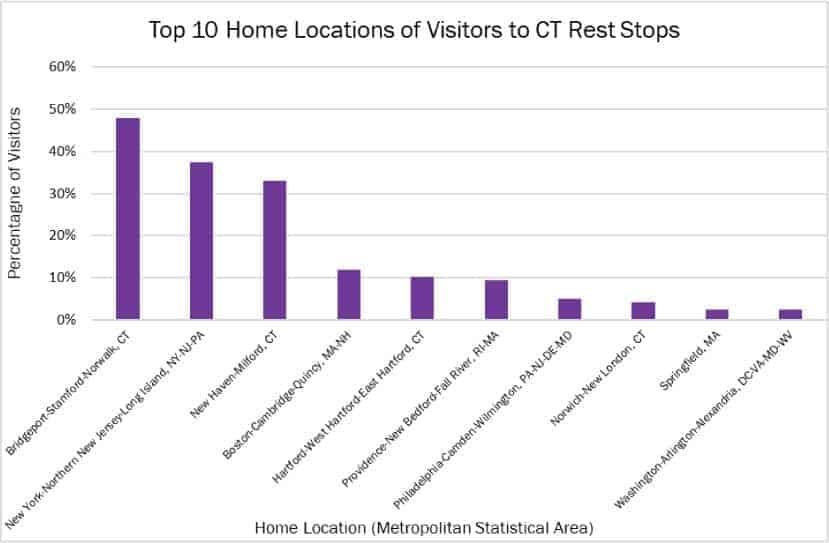
Now that we’re in the full swing of summer here on the East Coast, my friends and family have been taking road trips along I-95 – and for better or for worse, rest stops are an inevitable part of those trips. A few weekends ago, my parents’ car broke down on their way back home from New York, but fortunately they were able to make it to a rest stop. As my mom texted me from the rest stop parking lot, waiting for a tow truck at 11pm, I started to wonder: How many other people were at rest stops at such a late hour? Who else might be there with my parents? Was this rest stop typically a busy one?
It wasn’t long before I realized that, as a StreetLight Data employee, I had the answers at my fingertips – it was just a matter of running a study with StreetLight InSight®, our on-demand transportation analytics platform. In this post, I’ll show you what I found out, and share a few tips for evaluating your state’s rest stops.
The StreetLight InSight Analysis
I used StreetLight InSight to analyze the volume of traffic entering and exiting 76 rest stops along I-95 – an interstate highway that runs down the East Coast of the U.S. from Maine to Florida – during the months of June, July, and August in 2017.
To do this, I first downloaded a list of 103 rest stops by latitude/longitude from POI Factory. From there, I removed any rest stops that did not have any facilities – basically, rest stops that just have parking or a scenic view. Next, I entered each latitude/longitude into StreetLight InSight, located the rest stop, and drew a polygon around it to create my analysis zones.
I chose to analyze June, July, and August in order to capture family trips taken when kids are out of school. To run this study, I used StreetLight’s Location-Based Services data source. These are anonymous location records created by smartphone applications that provide Location-Based Services. This type of Big Data is great for analyzing personal travel, so it was the right data source to use given my focus on summer road trips. Here’s exactly what I wanted to find out:
- What are the top busiest five busiest rest stops along I-95?
- What is the busiest time of day to go to rest stops?
- Which rest stops have visitors traveling the furthest away?
What Are the Top Five Busiest Rest Stops Along I-95?
I used the StreetLight InSight Zone Activity analysis for this study. It provides transportation analytics that describe the relative volume of trips that begin, end, or pass through specific locations. The results showed that the top five busiest rest stops along I-95 are at the following locations:
- Delaware – NB/SB at MM 5 (Delaware House)* – Newark, DE
- Maryland – NB/SB at MM 81 (Maryland House)* – Aberdeen, MD
- Connecticut – NB at MM 12.4 (Darien Service Plaza) – Darien, CT
- Maryland – NB/SB at MM 2/3 (Chesapeake House)* – North East, MD
- Connecticut – SB at MM 41.4 (Milford Service Plaza) – Milford, CT
*These rest stops are in the middle of the highway, so visitors from both directions share the facility, which may help explain the high volume. But it’s a good insight for rest stop builders of the future who want to maximize visitors.
And with that, my first question was answered – my parents were at the fourth busiest rest stop along I-95, the Chesapeake House rest stop.
It’s interesting to note that the top five rest stops are clustered around two locations. The Milford Service Plaza and Darien Service Plaza are both located north of New York in Connecticut. It is possible that these are popular rest stops because they serve travelers between New York City and Boston heading to summer beach destinations. Likewise, the three rest stops further south, in Delaware and Maryland, are between Philadelphia and Washington, D.C., and they’re “on the way” to beach destinations in the mid-Atlantic.
While I didn’t analyze rest stop amenities comprehensively as part of this study, I was curious about the services offered at the top five most popular rest stops. This is what I learned:
- They all appear to be recently remodeled.
- They all provide electric vehicle charging stations as well as gas stations.
- They each have at least six different food service options.
- Four out of the top five rest stops have green/eco-friendly initiatives: The two rest stops in Maryland are LEED certified and the two in Connecticut are solar-powered.
What Are the Busiest Times of Day to Go to Rest Stops?
Next, I dug a little further into the transportation analytics and found out the busiest times of day to go to the top five rest stops. StreetLight InSight lets me customize day parts, so I defined them as:
- Early morning (5am-9am)
- Mid morning (9am-12pm)
- Lunchtime (12pm-2pm)
- Mid afternoon (2pm-5pm)
- Evening (5pm-8pm)
- Night (8pm-5am)
Across the top five rest stops, the busiest times of day were:
- Mid afternoon (2pm-5pm)
- Night (8pm-5am)
- Mid morning (9am-12pm)
- Lunchtime (12pm-2pm)
- Evening (5pm-8pm)
- Early morning (5am-9am)
Here’s the breakdown for each rest stop:
With this information, I learned the answer to my second question – my parents were at the Chesapeake House rest stop during one of their top two busiest times of day, between 8pm and 5am.
Which Rest Stops Are Visitors Traveling the Furthest To?
Finally, I wanted to find out which of these rest stops have visitors traveling from the furthest away. With a few clicks of my mouse, I learned that the Delaware House rest stop has visitors traveling from the furthest distance, with Maryland House in Aberdeen coming in a close second. I suspect that the popularity of Delaware House is related to this rest stop’s proximity to three highly populated metropolitan areas – Washington, DC, Philadelphia, PA, and New York City. If any local planners are reading this and have some context to share on this location, I’d love to hear from you.
Figure 6. This chart aggregates the lengths of trips, in miles, that begin at any one of the top five most popular rest stops on I-95. More than 30% of trips are over 100 miles long. About 31% of trips are less than 20 miles long. 0.8% of all trips are less than one mile long and 1.6% of trips are between one and two miles.
Next, I decided to look into the length and duration of trips from all of the rest stops I studied, on average. Were trips from the top five most popular rest stops typically longer or shorter than the average rest stop trip? It only took minutes to find out that the rest stops with visitors coming from the furthest distances were in South Carolina and North Carolina – states home to popular beaches like Myrtle Beach, Nags Head, and Hilton Head. Looks like people will go the distance to visit beaches in the South.
The next step was to compare the length of trips that begin at any of the 76 rest stops I analyzed with the top five most popular rest stops. I was surprised to see the relatively high volume of shorter, regional trips that originate at rest stops. Nearly 35% of trips from all of the rest stops in the analysis are less than twenty miles long. Thirty one percent of trips from the top five most popular rest stops are under 20 miles – a slightly smaller share, but not by much.
This finding indicates that rest stops are providing important benefits and services to regional travelers – not just long-distance ones. When we invest in rest stops, we’re certainly helping road trippers and truck drivers, but also residents of local and nearby jurisdictions.
Where Do Rest Stop Visitors Go Next?
Of course, this led me to wonder: where were the visitors to the top five busiest rest stops going next, and where are their home locations? To find out, I ran two additional analyses – an Origin-Destination to Pre-Set Geography and a Visitor Home-Work analysis. Origin-Destination to Pre-set Geography analyses scan all trips that begin, end, or pass through any geography to identify the origins and destinations, ZIP code, census block group, or transportation analysis zone. (For Canadian analyses, dissemination areas are available.) Visitor Home-Work analyses provide the aggregate expected home and work locations of visitors to a specific location.
From the O-D to Pre-Set Geography analysis, I learned that the next stop for visitors traveling to the top five rest stops were generally clustered around the coast or around major metropolitan areas. Travelers departing from rest stops in Connecticut tended to go to New England’s beaches, while travelers departing from rest stops in Maryland and Delaware had a broader range of coastal destinations across the Chesapeake Bay and in New Jersey, Delaware, Maryland, and New York.
From the Visitor Home-Work analysis, I learned that visitors to these rest stops reside fairly close-by – check out the charts below. This makes sense given that over 30% of trips from the top five rest stops are fewer than 20 miles long. Plus, families traveling with children tend to stop more frequently for bathroom breaks. I’m not at all surprised that Richmond, Virginia is also a popular home destination of visitors, seeing as my parents live there, and it’s home to StreetLight’s East Coast offices!
Conclusion
Whether you’re planning a road trip and want to avoid the crowds, a transportation planner looking to understand travel behavior for road maintenance and construction projects, or an economic development professional interested in the impact of rest stops, StreetLight InSight can provide a wealth of information in a matter of minutes.
Have you stopped at any of these rest stops – do they feel as busy as the numbers say they are? Let us know in the comments below!

